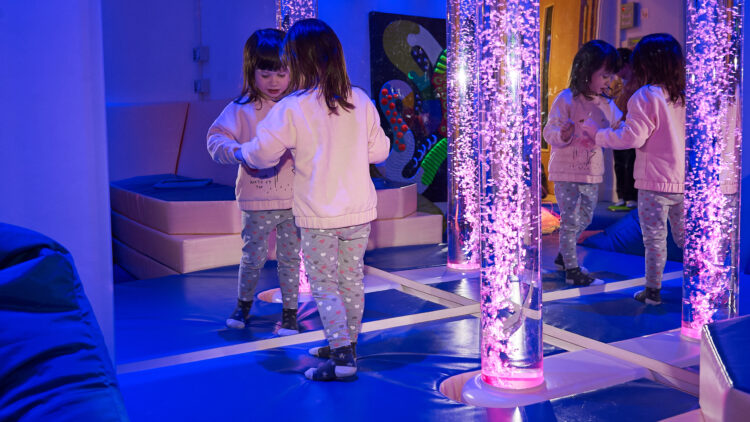By Gavin Mackintosh-
The first evidence-based guide to creating a sensory room to support the well-being and learning of autistic people has been launched at Cardiff University.
The Wales Autism Research Centre at the University collaborated with teachers and psychologists who work with autistic children, autistic people and parents to develop the new sensory room guide.
The resource aims to ground the development of a sensory room in research to help practitioners and parents maximise the benefit of sensory spaces for autistic individuals.
Calming Sensory Rooms are a useful resource that can help manage emotions and allow for maximum productivity from the entire day. A number of autistic people need access to a safe space that is both comfortable and rewarding, where the outside world is no longer the focus of their attention. They are a wonderful resource that can help manage emotions and allow for maximum productivity from the entire day
Autistic people often have unique needs, but are also usually extremely intelligent.
About 1 in 100 children has autism and characteristics may be detected in early childhood, but autism is often not diagnosed until much later.
The abilities and needs of autistic people vary and can evolve over time. While some people with autism can live independently, others have severe disabilities and require life-long care and support.
Experts say care for people with autism needs to be accompanied by actions at community and societal levels for greater accessibility, inclusivity and support.
Dr Catherine Jones, Director, Wales Autism Research Centre at Cardiff University who led the development of the guide, said: “A sensory room is a dedicated space that contains sensory equipment to transform the environment and provide sensory stimulation in lots of different ways. It is an adaptive space, changing the equipment types and stimulation amounts to meet the user’s needs.”
Sensory rooms are widely used within schools that support pupils with additional needs, as well as in a range of community and care settings for both adults and children, but there were no evidence-based guidelines for their creation. The team at the Wales Autism Research Centre aimed to develop a guide, based on their own research, to help educators ensure they can use sensory rooms to their full potential, to maximise their benefits for learning and wellbeing.
The sensory room guide draws on the Wales Autism Research Centre’s research into the use of key pieces of multi-sensory equipment – such as bubble tubes, mirror balls, fibre optics and tactile walls. It also explores the potential benefits of using a sensory room with autistic pupils, including positive changes in engagement and attention, mood and anxiety, and relationship building.
The news comes as a woman set up a support group for parents of autistic children has said more help is needed for those struggling with suicidal thoughts.
Renata Noyce, from Christchurch, Dorset set up the group after her son was diagnosed with autism.
She said since then more than a dozen families have contacted her after their children had tried to take their own lives. The British government has said it will be investing more in investment for mental health services
Dr Jones added: “We believe the focus of sensory rooms should be to support opportunities for enhancing the development, learning and wellbeing of autistic people – and we support a neurodiversity-affirmative approach to education.
Sensory rooms are an ideal space to support neurodivergent pupils without many of the environmental conditions of everyday life that can be a barrier to development, learning and wellbeing.”
One of the first places to use the new guide is the Cathays Community Centre, a facility that supports the community in Cathays and Cardiff central.
Bridie Smith, Sensory Room Manager at Cathays Youth and Community Projects, said: “The guide will equip us with the necessary tools and knowledge to prepare for our sensory facility’s opening and ongoing development.”
Dr Jones added: “We are so pleased to not only provide the first research-led guide to creating sensory rooms, which can be used internationally, but also to have involved autistic children, parents and educational practitioners in the process.
“This project has shown how research can be translated and directly applied to real-life applications, improving the learning and well-being of autistic children.”




